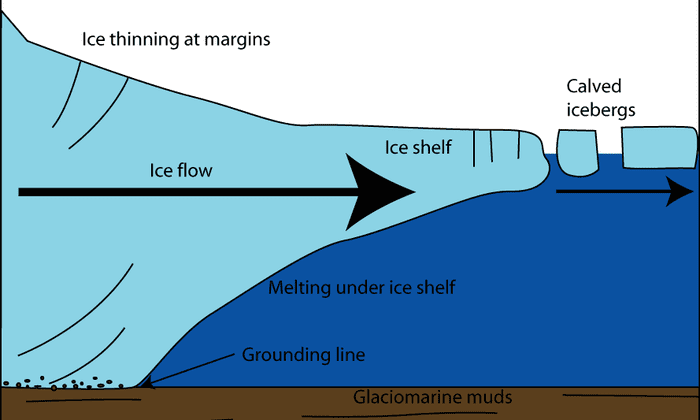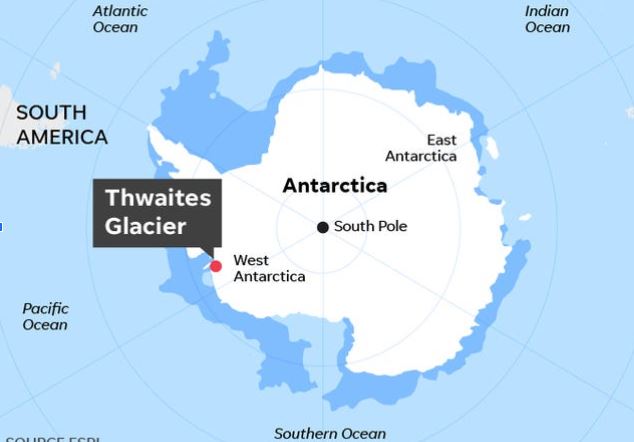Biodiversity & Environment
Melting of Thwaites Glacier
- 12 Feb 2020
- 2 min read
Why in News
Recently, a new study has detected the presence of warm water at a vital point beneath the Thwaites glacier as the cause of its melting.
Key Points
- The study has observed that the temperature of the water at the grounding zone or grounding line of the glacier is two degrees higher than the freezing point of the water.
- The grounding line is the place below a glacier at which the ice transitions between resting fully on bedrock and floating on the ocean as an ice shelf.
- The location of the line is a pointer to the rate of retreat of a glacier.
- When glaciers melt and lose weight, they float off the land where they used to be situated. It makes a retreat of the grounding line.
- That exposes more of a glacier’s underside to seawater, increasing the likelihood it will melt faster. This results in the glacier speeding up, stretching out, and thinning, causing the grounding line to retreat ever further.
Thwaites Glacier
- Thwaites Glacier is 120 km wide, fast-moving glacier located in Antarctica.
- Because of its size (1.9 lakh square km), it contains enough water to raise the world sea level by more than half a metre.
- Its melting already contributes 4% to global sea-level rise each year. It is estimated that it would collapse into the sea in 200-900 years.
- Studies have found the amount of ice flowing out of it has nearly doubled over the past 30 years.
- It is important for Antarctica as it slows the ice behind it from freely flowing into the ocean. Because of the risk it faces — and poses — Thwaites is often called the Doomsday Glacier.






